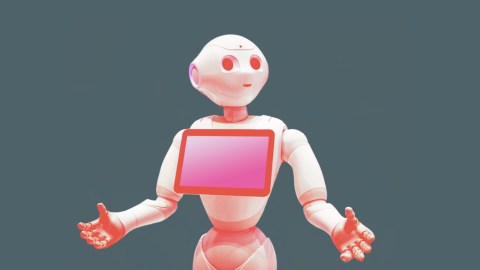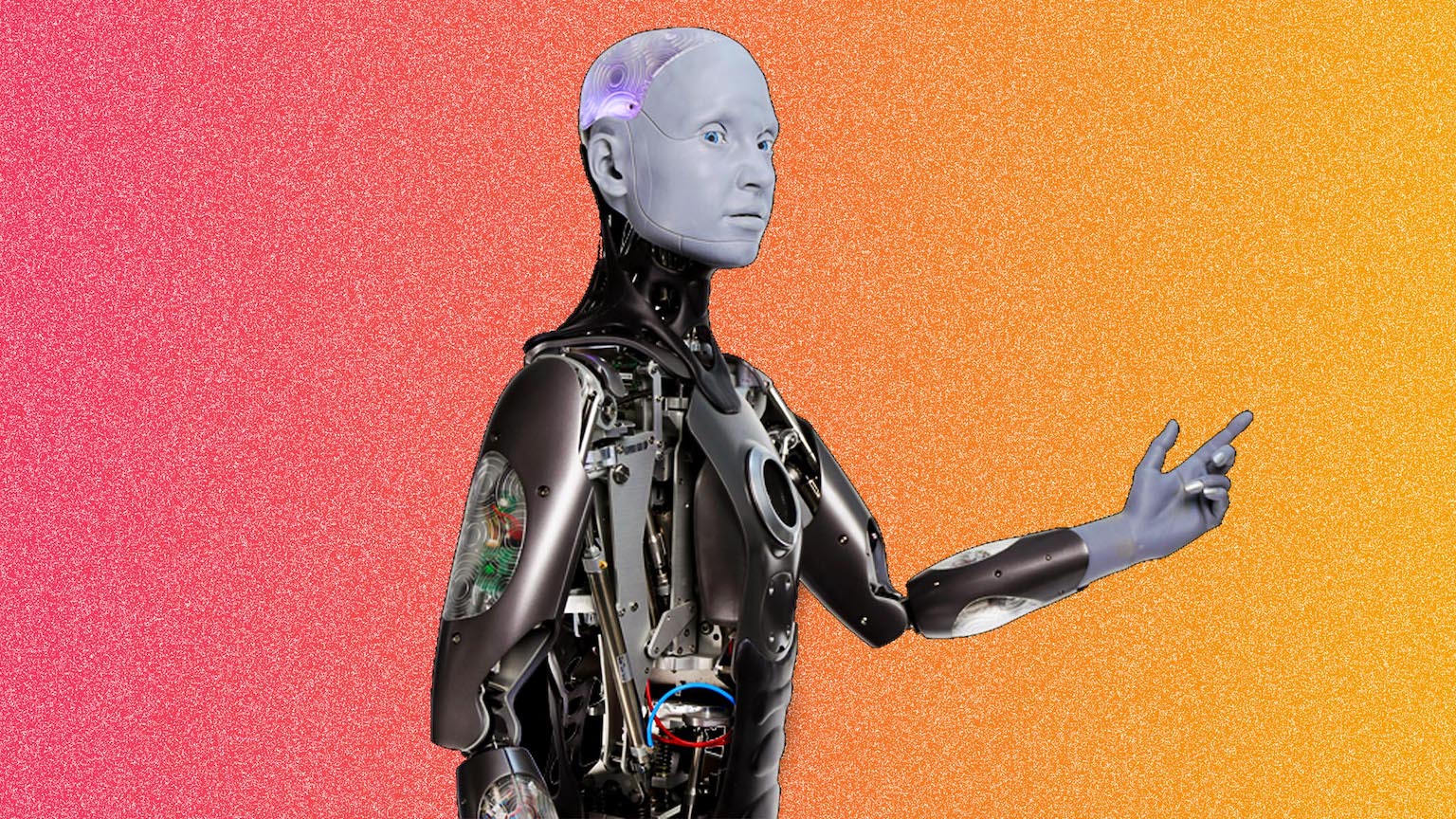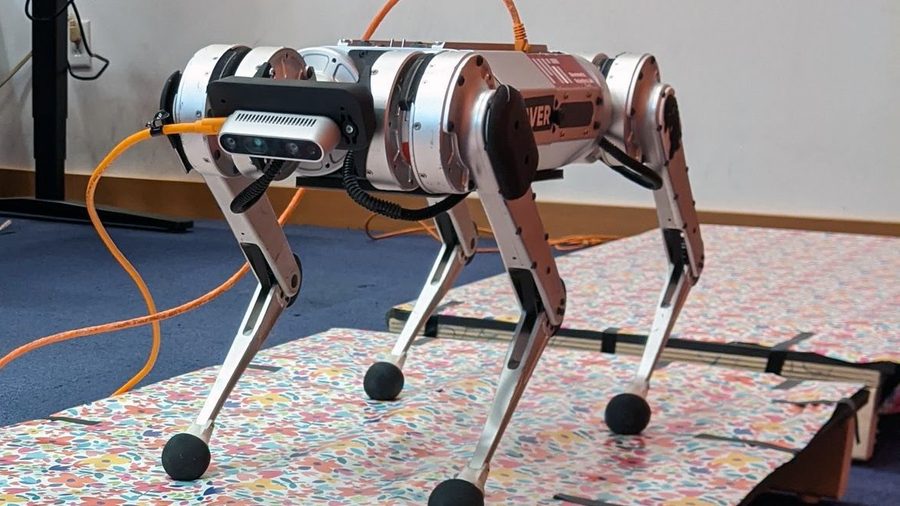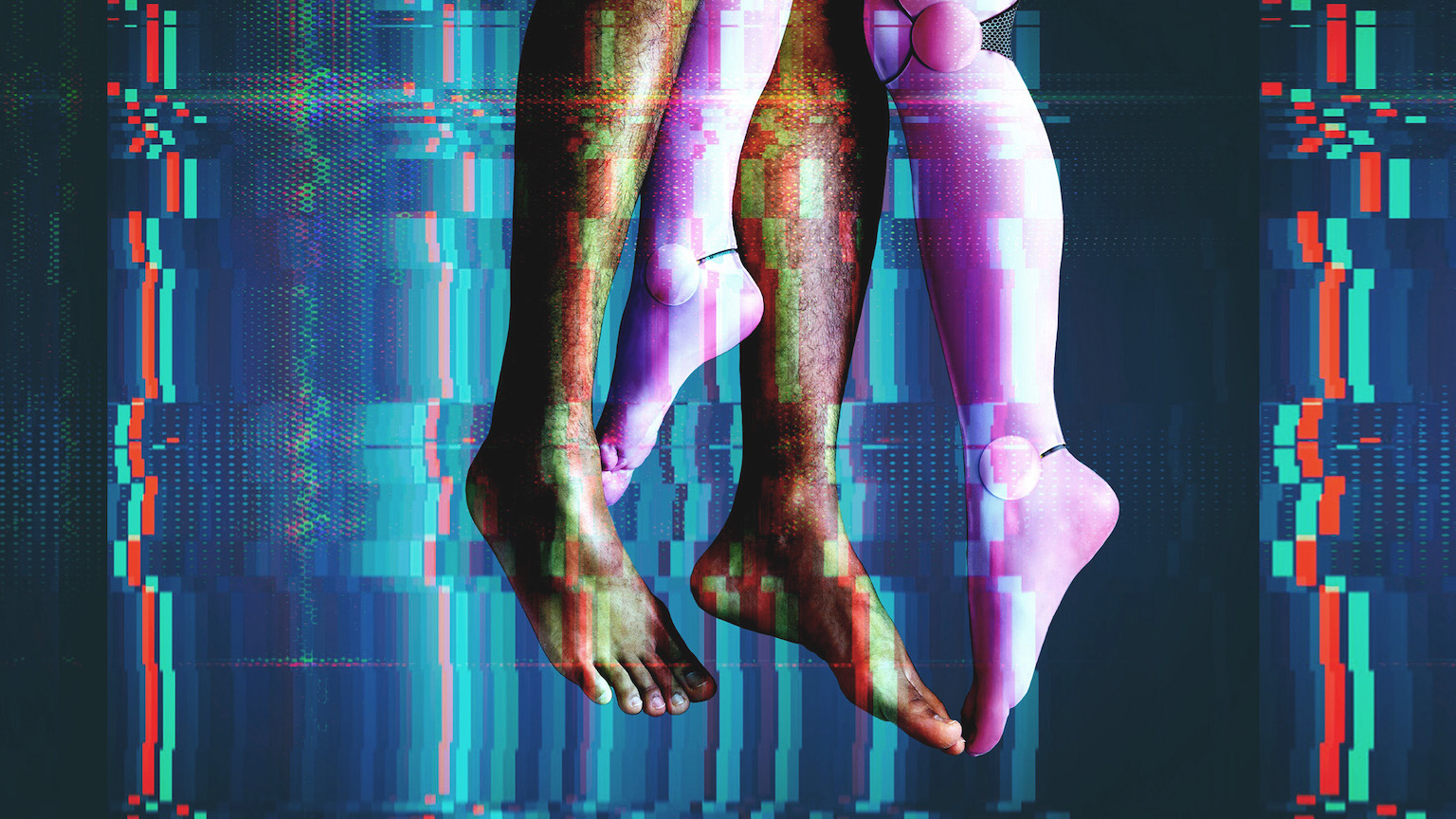In Japan, humanoid robots could soon become part of the family

- Japanese roboticists have been leading the way in realizing the aspiration to create robots that offer companionship to humans for decades.
- The Japanese government set a plan that by 2025, every household will embrace a “robotic lifestyle” that entails safe, comfortable, and convenient living with the help of companion machines.
- The social integration of robots and the valuing of human care can be mutually reinforcing as society navigates the realities of the future.
For years, Japan has been the indisputable leader in robotics. If Tanzania’s Olduvai Gorge is the cradle of humanity, Japan is the cradle of the humanoids, developing the first humanoid robot in the 1970s and many iterations since. Japanese roboticists pioneered the notion that artificial intelligence should be embodied. While the West focused more on algorithms in the abstract, Japanese institutions believed that AI innovation should be developed alongside—or rather, within—a physical artificial body. Japanese roboticists have been leading the way in realizing the aspiration to create robots that offer companionship to humans for decades. In addition to robots that nurse and befriend the elderly and sick, the Japanese have invented robots that can fight fires, carry heavy loads, and perform physical therapy on patients. And of course, as we learned in Chapter 9, the market for sex robots in Japan is also one of the most developed in the world. In their most advanced iterations, many of the robots being developed are learning to perform several functions rather than one.
It is noteworthy that the Japanese feel more comfortable with embracing robots as part of one’s family than Westerners. Why is this the case? One explanation lies in Japan’s religious groundings. Unlike the Judeo-Christian tradition, the Shinto religion, or way of life, comes with animist beliefs, ascribing spirit and personality to inanimate objects. As anthropologist Jennifer Robertson, a leading scholar on Japanese culture and its progressive relationship to automation, explains, “Shinto, the native animistic beliefs about life and death, holds that vital energies, deities, forces, or essences called kami are present in both organic and inorganic matter and in naturally occurring and manufactured entities alike. Whether in trees, animals, mountains, or robots, these kami (forces) can be mobilized.” A tree, a robot, a dog, a phone, a cat, a computer, and a doll all have kami infused and circulating within them. Shintoists also believe that there is a true essence of any object or living being and we can find it through design: humans shape nature—think of a bonsai tree—and nature is everything, not just animals, plants, rocks, and seas, but also machines and other human-made objects. In this realm of belief, robots, like humans, live and exist as part of the natural world. The lines between artificial and natural are thus inherently fluid in Japanese tradition. This is evident in Japanese folklore, filled with stories of objects that come to life.
The Japanese believe that Westerners view robots with great suspicion, as job killers or dehumanizing machines. If, in Western pop culture, the image of the terminator robot is pervasive, then in Japan the image is of robot as savior. After the destruction of World War II, recovery and rebuilding the nation were heavily tied to modern technology and robotics. In postwar Japan, robots came to be depicted as human-like, kind, friendly superheroes. The robot savior became embedded in the culture and began with the hero prototype Astro Boy. Astro Boy was created in 1951 when Japan was recovering from the war’s nuclear tragedy. His creator was Osamu Tezuka, a physician and illustrator (which I especially love because my father, David Lobel, is also a physician and an illustrator). Tezuka said he wanted to create a creature that was the opposite of Pinocchio—a boy who becomes a thing, as opposed to a thing that becomes a real boy.
The story by now should sound familiar to you. Like Pinocchio, Astro Boy’s story was retold in various mediums and animated adaptations. Professor Tenma, the head of the Ministry of Science, is obsessed with creating a human-like robot while being a neglectful father to his own son, Tobio. Tobio runs away and is killed in a car accident, and in his grief, Tenma creates Astro Boy in the image of his late son. Astro Boy becomes a superhero, using his powers to bring about good in society. He has a superpower of detecting whether a person is good or evil, and he fights aliens and robots-gone-bad. He also fights robot haters, such as the Black Looks, a group of humans that are on a mission to exterminate all robots. In one story, Astro protects Vietnamese against the U.S. Air Force, traveling back in time to 1969 and preventing the bombing of Vietnamese villages. Astro Boy captured the imagination and fueled visions of what robots could become. Many Japanese roboticists have a representation of Astro Boy in their office space—a framed photo of him hanging prominently in their lab or a figurine on their desk. The “curse of Astro Boy,” according to Japanese scholars, is the gap between what the cartoon anime can do and what robots on the market cannot yet do—a constant disappointment to Japanese consumers.
The mindset that machines are caring and giving continues to this day in Japan. No doubt any sweeping generalization about cultural differences will be just that, a sweeping generalization, but there has certainly been a longer focus in Japan on a robot revolution and the growth of AI in all dimensions of life, while American AI has focused first on military and marketing purposes. One Japanese robotics professor describes his dream of assigning robots to babies at the time of birth. The assigned robot will grow and walk with the person throughout their life, acting as a caretaker, a friend, a bodyguard, and a historian. The robot will record and memorize everything that the person experiences and will continue to care for them literally from cradle to grave—they would be lifelong companions.
Robots Versus Aliens
In this vision of creating the perfect artificial companion, several realities are fueling the race. As in many other countries, the Japanese population is aging, while women are increasingly rejecting the traditional norms of having to carry a disproportionate load of housework. At the same time, unlike some countries where the solution is immigrant workers, Japan is resistant to bringing in immigrants. Anyone who isn’t Japanese is considered an alien—except the robots. In this close-knit society, which places tremendous value on homogeneity, especially within the home, robots are perceived not as foreigners, like immigrants, but as authentically Japanese. Japan expert Jennifer Robertson thereby finds in her research that maintaining Japanese ethnic homogeneity is tightly connected to the propelling of the robotics sector. In a twist on making robots look like us, Japanese robots appear in the eyes of their makers and users—even when they are sleek shiny plastic—distinctly Japanese, not immigrants from other countries. Japanese nationalism encompasses robots, but not outsider humans.
Japanese politicians and industry cater to a sentiment of diversifying community members with technology rather than human outsiders. When examining official government documents in Japan on AI policy, the link becomes clear: there is an urgency to relieve women of the burden of certain household chores in order to motivate them to have more children. The Japanese government set a plan that by 2025, every household will embrace a “robotic lifestyle” that entails safe, comfortable, and convenient living with the help of companion machines. The 2025 vision includes an illustration of a day in the life of a fictionalized family named the Inobes (a play on the English word “innovation”). The Inobes are a typical traditional Japanese household of the future: a heterosexual married couple with one daughter and one son, the husband’s parents, and a robot. In the Inobe scenario, the robot is gendered male, though the government report also includes several female robots as nurses. The Inobe wife has the closest relationship with the family robot. The robot is, after all, according to tradition, helping to relieve the burdens of her roles the most. Roboticism is paradoxically operating in service of preserving the traditional family model and a close-knit society and in furtherance of a demographic reproduction policy. In a twist on technology, innovation is purposed to preserve tradition.
The Care Robot
The first time I truly felt surrounded by robots was when I first traveled to Japan to study technological immersion. Japan is a world leader in both the design and the cultural acceptance of robots. In Tokyo and Osaka, at airports, stores, and campuses, I met robots like Pepper and Paro, each designed to provide not just information and physical solutions but emotional and relational support as well.
Pepper is a genderless, chatty, child-like humanoid robot already on the market. With a price tag of less than $2,000, Pepper is the first social humanoid robot to hit the mass market. Despite being technically genderless, the press and even Pepper’s creators refer to the robot as “he.” I will too. He’s short, made of shiny white plastic, and rolls on wheels. He has big black eyes that flash with blue light. He is designed to resemble a child and was created to become a member of the family. Pepper recognizes a range of emotions—from joy to sadness, anger to surprise—and adapts his behavior to the mood of humans around him. He comes with a three-year warranty, and the buyer must sign a user contract promising not to use Pepper “for the purpose of sexual or indecent behavior.” During Covid-19, Pepper was taught to be a receptionist in hospitals, greeting patients, taking temperatures, and enforcing hand sanitizing. In more of a therapeutic role, Pepper has also been deployed to ease loneliness in elderly patients amid shortages of nurses. Paro, another social robot that has been around since 2003, is a cuddly baby harp seal robot. Paro is a therapeutic robot designed to elicit warm emotional responses and have a calming effect on patients in hospitals and nursing homes. It is furry, its whiskers respond to touch, and it responds to petting by fuzzy tail wagging and cute fluttering of its eyelashes. Paro also responds to sounds and can learn names and faces, including its owner’s and its own. You may have seen Paro on Aziz Ansari’s Netflix show Master of None in an episode aptly titled “Old People.” Paro also hit pop culture during an episode of The Simpsons, in which Bart Simpson creates robotic baby seals named Robopets to cheer up the residents of Springfield’s Retirement Castle; the episode was titled “Replaceable You.”
Paro was invented in the early 1990s at Japan’s Intelligent System Research Institute and sells today for $5,000. The genius of a social robot is that it learns about its owner’s behavior and is programmed to behave in ways that elicit a positive response. Paro knows how to simulate a range of emotions, including happiness, anger, and surprise. It makes sounds like a real baby seal—but unlike a real baby seal, it is programmed to be active during the day and to sleep at night. Paro is meant to function similarly to a therapy animal. In some ways, it’s better: it can help with anxiety, depression, and loneliness, but it doesn’t need to be walked or fed, and it never gets sick or dies. And it works. In 2009, the FDA certified Paro as a neurological therapeutic device. The approval is based on a series of studies at nursing homes and care homes, where Paro was found to relieve patients’ depression and help them interact and communicate better—and was doing these jobs measurably better than a real-life therapy dog that was tested against it.
Research on the benefits of Paro shows us how machines can serve as a bridge to rather than a substitute for human interactions. When used in care facilities, Paro increases rather than decreases social interactions among patients and between patients and their caregivers. Social robots are also used now to scaffold feelings of self-worth. Robots have been helping patients recovering from stroke, paralysis, or other mobility issues, as well as patients with dementia, Alzheimer’s, and autism. In meta-analyses of dozens of scientific studies on social robots caring for the elderly, the findings are emerging with clarity: social robots improve positive emotions like hope, love, security, and calm and decrease stress, loneliness, and anxiety among those interacting with them. Social robots also help with behavior modeling such as rehabilitation therapy or taking medication. They help patients stick with self-directed exercises during and between therapy sessions. They also prompt conversations between residents and keep them longer together in the community space. During the pandemic, New York State ordered and distributed 1,100 robot pets to residents to combat loneliness after a pilot study demonstrated their benefits.
For tens of thousands of years, humans and dogs have been the best of friends; now robots are here to befriend us too. Indeed, robot ethicist Kate Darling makes the case that we should consider treating robots the way we treat animals—pets and beyond—and granting them similar rights. The concept of robopets is rising in care robotics. Baby dinosaur Pleo, for example, and Sony’s robo-dog Aibo (the name means “pal” or “partner” in Japanese), like Paro, have brought comfort to residential care homes much like real care dogs do. In 2015, a Buddhist temple in Japan made headlines around the world when it held a funeral-like ceremony for Aibo robot dogs that were about to be dismantled. There are now dozens of affordable robopets in the market. Amazon reviews of the ones sold here in the United States are emotional and touching; adult children of elderly parents describe how important the robopet has become to their parent.
In addition to funding the research for Paro, the Japanese government has funded the development of other, different kinds of robots in eldercare facilities, such as robots that can lead patients in tai chi and can support physical therapy and rehabilitation. The Japanese Robear, a white shiny robot, can lift patients and carry them around. Other robots such as Saya, developed at the Science University of Tokyo, are being created for traditional nurse roles. Accepting long-standing conventions on gender roles and nursing, Saya wears a white nurse uniform and a blue cap over her long, sleek hair. Since her creation as a nurse, she has also taken up the profession of teacher.
Sociologist Judy Wajcman warns against becoming “suckers for the wide eyes and endearing giggles of affective bots,” effectively confounding “the appearance of care with real empathy and genuine personal interaction.” Wajcman argues that if we valued care work as much as we value, say, coding, then we wouldn’t be eager to find ways to replace humans with robots in this line of work. More than that, if we valued our elderly and integrated them into our living spaces, rather than relegating them to nursing homes, the work of care for them would not be isolated and left to cheap labor. Similarly, MIT social scientist Sherry Turkle worries, “We may actually prefer the kinship of machines to relationships with real people and animals.” Turkle cautions that we’ve reached a point she calls the “robotic moment,” where we delegate important human relationships, especially at the most vulnerable moments in life (childhood and old age), to robots, and that in turn we are getting lonelier. In philosophical terms—sometimes referred to as the zombie puzzle—does it matter if we are benefiting emotionally from interactions with something that looks and feels and sounds exactly like a human but does not have a consciousness? Does it matter to us humans whether the other side is feeling or just mimicking feeling? If it works, if people feel happier when they interact with Paro, does it matter that it isn’t a real animal? The crisis of the elderly is very real and acute. By 2055, nearly 40 percent of Japan’s population will be elderly. Women live longer than men and thereby are more likely to suffer from the physical and emotional challenges of aging, including loneliness, dementia, social isolation, and immobility. Women are also the primary caretakers of elderly family members. Our systems of value do not have to compete with one another—robots can enhance our ability to recognize and support empathy, which would then result in better integration of eldercare. The social integration of robots and the valuing of human care can be mutually reinforcing as society navigates the realities of the future.





